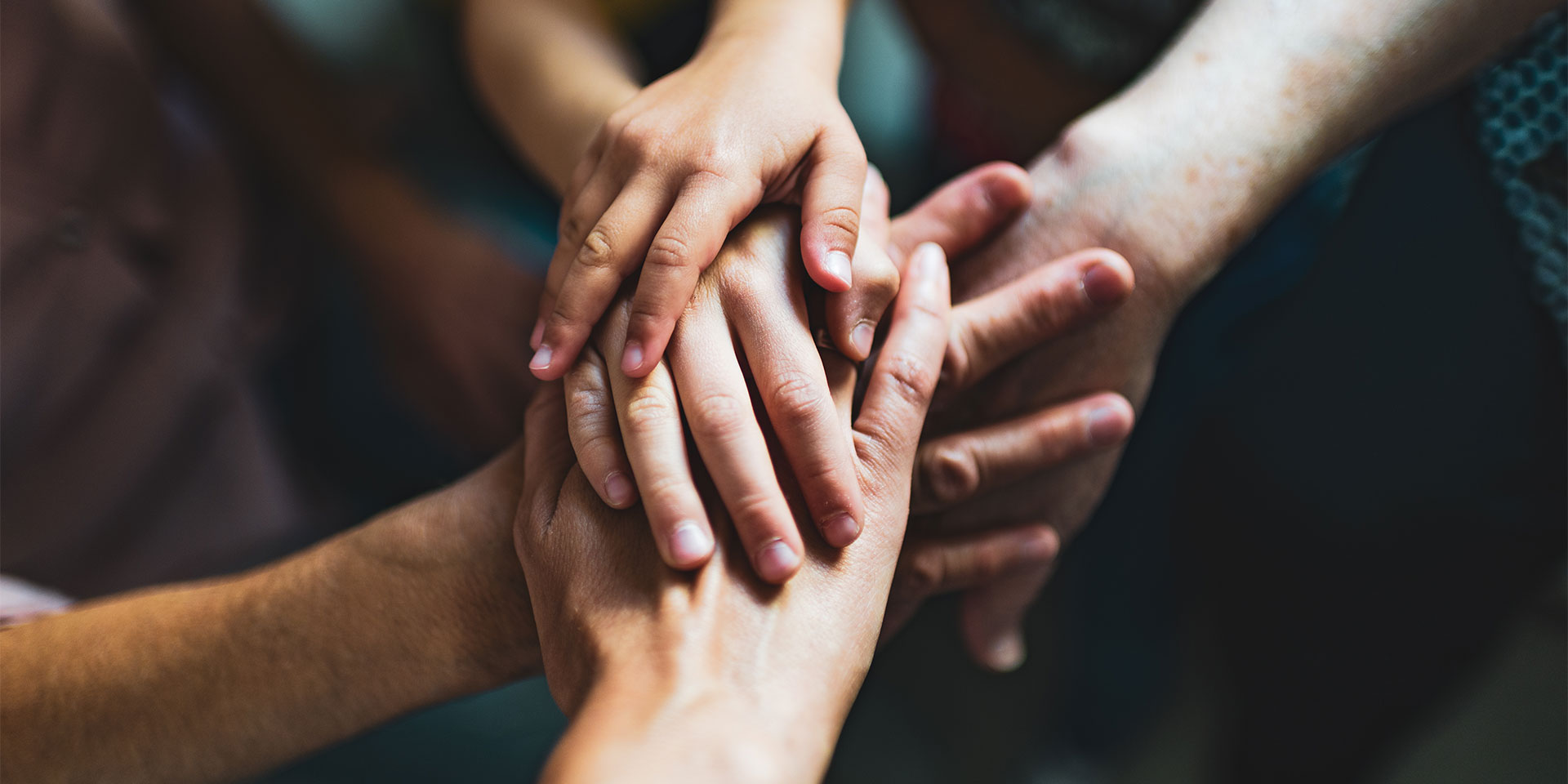“A friend in need is a friend indeed. Be that as it may, near is my shirt, but nearer is my skin.” Is this an outdated saying, or is it still relevant? To whom, when, and how are we prepared to offer help?
The murder of Catherine S. Genovese near her home in New York on 13 March 1964 was a story that made the front pages of American newspapers for a long time because of a widely criticised aspect of public opinion. The incident that led to the woman’s murder lasted about 30 minutes, during which 38 of her neighbours, who heard her screams, surprisingly did nothing to help her.
The American professor and psychologist Daniel Batson conducted an interesting experiment in 1973 to find out when students were willing to help. Unaware that they were taking part in the experiment, students were asked to reflect on the parable of the Good Samaritan, only to be told later that they would be attending a conference on the same topic, but in a different university building.
What the students didn’t know was that on their way to the conference hall they would meet a man who had collapsed and needed their help. In order to determine the conditions under which help would be offered, some of the students were told to wait a little longer before entering the conference hall, while others were told that they were already late and should hurry.
The result? About two-thirds of the students in the first group (who were not in a hurry) helped the man who had fallen, while only 10% of the students in the second group (who had been told they were late) behaved prosocially.[1]
What stops us helping others?
As we can see from the examples above, the simultaneous presence of several witnesses to an incident or the explicit requirement to be in a certain place at a certain time are reasons that prevent people from helping others.
The lack of action in the Genovese case is due to the fact that all witnesses to the tragedy expected help to come from others. This phenomenon is known as diffusion of responsibility and refers to the fact that people will not intervene unless they feel the pressure to do so when they witness such incidents. In addition, psycho-sociologists Latane and Darley have pointed out that as the number of people present at certain incidents requiring witness intervention increases, the tendency to help and the time to intervene decreases.[2]
Barriers to prosocial behaviour
From another perspective, just as the tone makes the music, the way in which help is asked for determines whether help is given. Help that is asked for too forcefully will be delayed or not offered at all. When freedom of action is restricted, we generally experience a negative emotional state, hence the desire to act according to our own decisions. This is also supported by studies by the psycho-sociologist Horowitz,[3] who argues that help is received when it is asked for moderately rather than insistently.
Help is also offered on the basis of reciprocity: if you are helped, you must reciprocate.
However, if a person compliments another person and then insults or slanders them after a while, they are much less likely to be helped in times of need than if a good deed preceded the harm done by a few days or weeks. But this situation is resolved by what psycho-sociologists have called the law of temporal retro sequence: the more time that passes between a person doing harm and asking for help, the greater the chance that he or she will be helped.
Prosocial behaviour, helping behaviour, and altruismWhen describing actions taken for the benefit of another person, psycho-sociologists use different terms: prosocial behaviour, helping behaviour or altruistic behaviour. Although many people are tempted to think of these terms as semantically equivalent, they have different meanings. Prosocial behaviour refers to actions that are positively valued in society. It includes not only those behaviours that contribute to the physical and psychological well-being of another person, but also the orientation towards helping, protecting, supporting and developing other people without expecting any external reward.[4] The psychologist Hans Werner Bierhoff identified two necessary and sufficient conditions for identifying prosocial behaviour: the intention to help other people and the freedom of choice (to help outside of professional obligations).[5] Helping behaviour is a subcategory of prosocial behaviour, the voluntary aim of which is to do something good for another person or group of people. The defining factor is intention. If you accidentally lose a large sum of money, which is then found by a homeless person, you have not committed a prosocial act. If you give the same amount of money to someone with the intention of helping them out of a difficult situation, then this is a helping behaviour. The same applies to charity work. It is not a prosocial act if it is done solely out of a desire to create a positive public image. Altruism is a subset of helping behaviour and is concerned with the desire to be of benefit to others. In essence, altruism is difficult to prove. Some behaviours are very easy to identify as prosocial. Others require special attention and their inclusion in the category of prosocial behaviour remains debatable. |
Do you reach out your hand to the person in need?
Most people don’t offer help immediately. Typically, when faced with the need to help others, people first analyse the circumstances and consider whether the effort involved is worth the benefit received. They unconsciously perform a cost-benefit analysis before engaging in prosocial behaviour.
Although people tend to provide help in order to maintain balance in interpersonal relationships, the higher the cost of an action, the lower the likelihood of providing help. People are less likely to pick up intoxicated people from the pavement, to accompany the blind, to help those in a precarious situation, because they perceive the cost of helping to be too high: usually loss of prestige through association with such people.[6] As a result, the very people who need help the most are bypassed. A person who is not a good swimmer will avoid jumping in to save someone who is drowning.
Furthermore, whether we are aware of it or not, there is a direct link between our emotional state (happiness, optimism, sadness, etc.) and when help is offered. In other words, prosocial behaviour has an emotional basis. In certain situations, negative feelings lead to positive attitudes towards others. One example is guilt. Arguing with a close friend over a small matter may later lead to doing something nice for that person. In this case, helping restores a relationship that we value.
However, people who experience positive emotions are the most likely to help those around them.[7] There are many explanations. Joy, for example, makes us more generous in our assessment of the situation we find ourselves in. This leads to greater attention to what is happening around us, greater self-confidence, and a greater ability to help others. Positive feelings open the individual to the world, while negative feelings draw the individual into the self.
When do we offer help?Personality variables that have been associated with greater willingness to engage in prosocial behaviour in certain contexts are 1) a high degree of empathy towards others; 2) attributing the causes of events to voluntary action rather than external circumstances; 3) a focus on the collective rather than the individual; and 4) an extroverted personality (seen as more open to experience and more agreeable). |
Why do we offer help? Altruism versus selfishness
The phrase: “Only you can help me!” often prompts us to act. However, everyone reacts differently. We tend to help people who have made a good impression on us, or people who are dependent on us and of whom we have a good opinion.[8] We help those who are in a critical situation, who have had unfortunate things happen to them for which they are not responsible. Those who “had it coming” are less likely to be helped, even though they too are dependent on us.
Family and close friends come first. Strangers come next, but only to the extent that we perceive them to be dependent on us. The explanation for prosocial behaviour in this case is selfish and lies in the satisfaction we derive from ourselves, our internal moral standards[9] and the norm of social responsibility—hence the feeling of guilt when this norm is not met.
Nevertheless, people help not only for selfish reasons, but also for altruistic ones—not only when they feel bad and want to restore their mood, or when they seek the rewards of empathic joy (the other person’s joy becomes their joy),[10] but also when they show empathic care (when they resonate with the needs of others).
Shifting perspective is the first step towards altruism, as psycho-sociologist Daniel Batson points out.[11] When we see a person in need and imagine what they are feeling, we may experience a sense of deep distress that triggers a desire to help that person to alleviate their suffering. This is what empathy-altruism is all about.
Being kind is learned
Being empathetic, putting yourself in another person’s shoes to understand them and work out how to help them, is a behaviour that is learned from childhood. The way parents manage to develop this skill in their child influences the way the adult will respond in the different contexts in which they will find themselves.
In her 25-year career as a psychologist, Annye Rothenberg outlines the steps parents can take to awaken empathy in their children. First and foremost, children need to be given independence when they can do things that are appropriate for their age. Tasks should not be taken over by parents. For example, children should be expected to pick up their toys if they drop them. Parents should help children, while avoiding becoming the children’s servants.
Secondly, children must learn to respect their parents. A lesson in this regard is the reaction of the parents when they are offended by the children. They should let them imagine how they would feel if others had offended them. In this way children learn that others too can behave inappropriately and understand where they are going wrong. But the parental response mustn’t stop there. Children need to understand that they need to do something to make up for it. If the process of making amends is not complete, children will believe that they can behave badly towards anyone. They will lack empathy for others and focus only on themselves.
Thirdly, children need to get used to an atmosphere of sharing the events of the day. Parents need to focus on how different situations make them feel (be it happy or sad), show the children that they have moments of weakness, and reinforce the idea that emotional support from the family is very important. This will help them to talk openly about themselves without fear of being judged.
Fourthly, parents should try to work with their children to identify and understand the reasons why some people hurt others.
And finally, when children start to tell their parents about the inappropriate behaviour they have shown towards others, the parents’ skills in cultivating empathy must come into play. Questions such as: “What do you think that person thinks about you now?” or “How do you feel about what happened?” followed by “How do you think you could have acted differently to avoid this situation?” will really help your children. They will analyse the situation and act differently in the future. They will become empathetic.



















